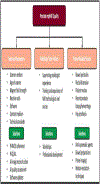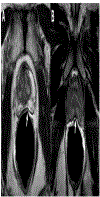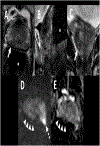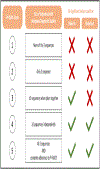Prostate MRI and image Quality: It is time to take stock
- PMID: 36870241
- PMCID: PMC10493032
- DOI: 10.1016/j.ejrad.2023.110757
Prostate MRI and image Quality: It is time to take stock
Abstract
Multiparametric magnetic resonance imaging (mpMRI) plays a vital role in prostate cancer diagnosis and management. With the increase in use of mpMRI, obtaining the best possible quality images has become a priority. The Prostate Imaging Reporting and Data System (PI-RADS) was introduced to standardize and optimize patient preparation, scanning techniques, and interpretation. However, the quality of the MRI sequences depends not only on the hardware/software and scanning parameters, but also on patient-related factors. Common patient-related factors include bowel peristalsis, rectal distension, and patient motion. There is currently no consensus regarding the best approaches to address these issues and improve the quality of mpMRI. New evidence has been accrued since the release of PI-RADS, and this review aims to explore the key strategies which aim to improve prostate MRI quality, such as imaging techniques, patient preparation methods, the new Prostate Imaging Quality (PI-QUAL) criteria, and artificial intelligence on prostate MRI quality.
Keywords: Diagnostic Imaging; Magnetic Resonance Imaging; Prostatic Neoplasms.
Published by Elsevier B.V.
Conflict of interest statement
Declaration of Competing Interest The authors declare that they have no known competing financial interests or personal relationships that could have appeared to influence the work reported in this paper.
Figures






References
-
- Ahmed HU, El-Shater Bosaily A, Brown LC et al. (2017) Diagnostic accuracy of multiparametric MRI and TRUS biopsy in prostate cancer (PROMIS): a paired validating confirmatory study. Lancet 389:815–822 - PubMed
-
- Turkbey B, Rosenkrantz AB, Haider MA et al. (2019) Prostate Imaging Reporting and Data System Version 2.1: 2019 Update of Prostate Imaging Reporting and Data System Version 2. Eur Urol 76:340–351 - PubMed
Publication types
MeSH terms
Grants and funding
LinkOut - more resources
Full Text Sources
Medical
Research Materials
Miscellaneous

